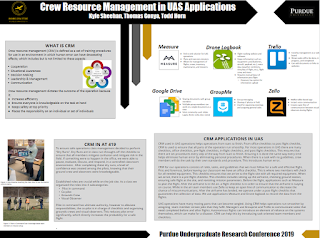ffffffffffffffffffffffffffffffff This video shows Ryan launching the Bramor.
As seen, Evan callouts when Ryan is able to pull the launch cord.
As always, I was nervous for the parachute landing (due to the nature of it) but it deployed nicely. I am very confident in my ability to pack the parachute but it was nerve wrecking regardless. After the flight Evan gathered the data and told us that over 1600 photos were captured, totaling about 160 GB of data. This semester was a fun and interesting one. I'm glad I was chosen to be the lead flight engineer. When I graduate I would like to get into systems engineering or design engineering. Being able to learn more about complex unmanned systems has broaden my knowledge on aviation. I work very hard on my other major AET(Aeronautical Engineering Technology). I would like to incorporate both my knowledge of UAS and AET so I can get a career that involves design of unmanned technology. While I am not very interested in career path that deals with GIS, it is still great to know. If I were to get a liaison position, it would be good to know both the engineering side and the data side.
I would like to take a moment and thank both Dr. Hupy's for their time and effort in this major. Dr. Hupy was new to teaching at Purdue and did a great job focusing our time into something that we could use in the career field. I would also like to thank my class mates I worked with these past four year, we made a great team and have tons of fun learning.






